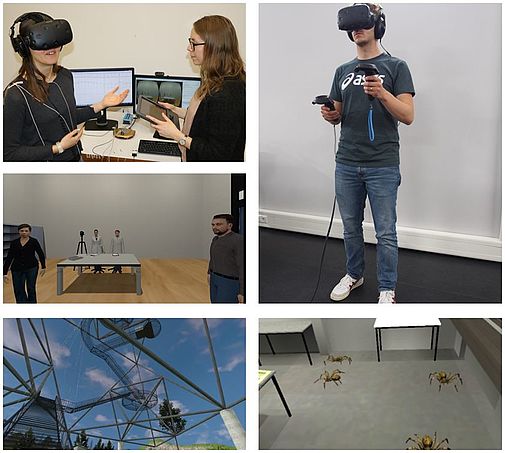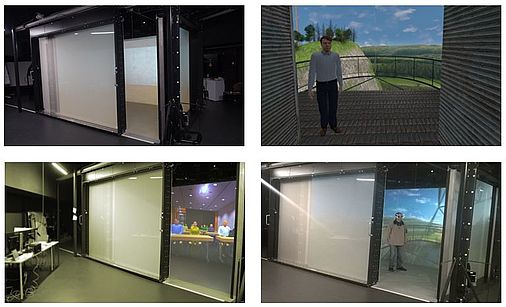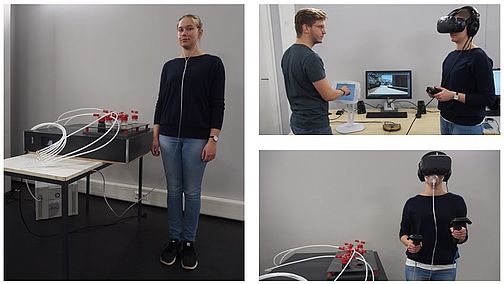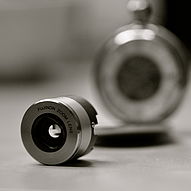
Labs
Presentation software
Virtual reality (VR)
To study anxiety, anxiety disorders and affective states, we use different paradigms in virtual reality (VR), an interactive form of computer simulation that allows us to present complex situations. For this we have established different labs (CAVE, VR, MotionLab) at the University of Regensburg.
Several of our current studies focus on the mechanisms of exposure therapy in VR. VR is a suitable instrument for this research topic as it provides the possibility to generate controllable and easily adjustable experimental settings (for an example see "Effect of multiple context exposure on renewal in spider phobia").
Another research focus at our department are social interactions, which are often relevant for experiencing stress in private as well as professional contexts. They are also a defining component of several mental disorders and point of intervention in psychotherapy. To shed more light on various aspects of social interactions, we utilize virtual reality paradigms, with the ultimate goal to develop tools to investigate social interactions, which can also be used in mental illness prevention programs and to treat social anxiety.

If you are interested, you are welcome to inform about our current research projects under the following link.
Multisensoriklabor (CAVE)
Main component of the multi-sensor laboratory is a CAVE ("cave automatic virtual environment") with a 5-sided stereo projection system. In the CAVE virtual environments can be projected in 3D on screens and the user can move freely within the CAVE. For a multimodal representation of virtual reality, speakers, fans (e.g., for wind simulation in height scenarios), controlled presentation of air with odors, and motion interactions are used. The CAVE is used for research and therapy. For the latter, virtual scenarios for exposure therapy for anxiety disorders (e.g., fear of heights, spider phobia) are available. In addition, various behavioral measures (movement- and eye-tracking) and physiological measures (peripheral physiology and EEG) can be measured in the CAVE.

Olfactometer
With the help of the olfactometer, we have the opportunity to present a controlled presentation of air with odors. Thus, in addition to visual, auditory, or tactile information presentation, olfactory sensory modalities can be used for exposure therapy research.

Data recording
Elektroenzephalography (EEG)
To study neurophysiological questions, we have the opportunity to use an electroencephalogram (EEG) to watch the brain "working". For this we currently use an EEG system with 32 measuring channels. Other psychophysiological signals (such as electrodermal activity or heart rate) can be derived parallel to the brain waves. This allows us to measure both central and peripheral responses to emotional stimuli. In addition, we can influence the activity in circumscribed areas of the brain by non-invasive brain stimulation (by applying a low direct current) and thus, for example, influence learning processes.

If you are interested, you are welcome to inform about our current research projects under the following Link.
Peripheral physiological measures
In order to measure physiological reactions to emotional stimuli, we use various peripheral physiological measures, such as heart rate, skin conductance and startle responses (see for example: The BDNF Val66Met polymorphism modulates the generalization of cued fear responses to a novel context).
Eye-Tracking
To measure the eye movements of a person, we record various parameters (including count of fixations, fixation duration, saccades). These behaviors are measured within the CAVE, VR paradigms, and field experiments.



